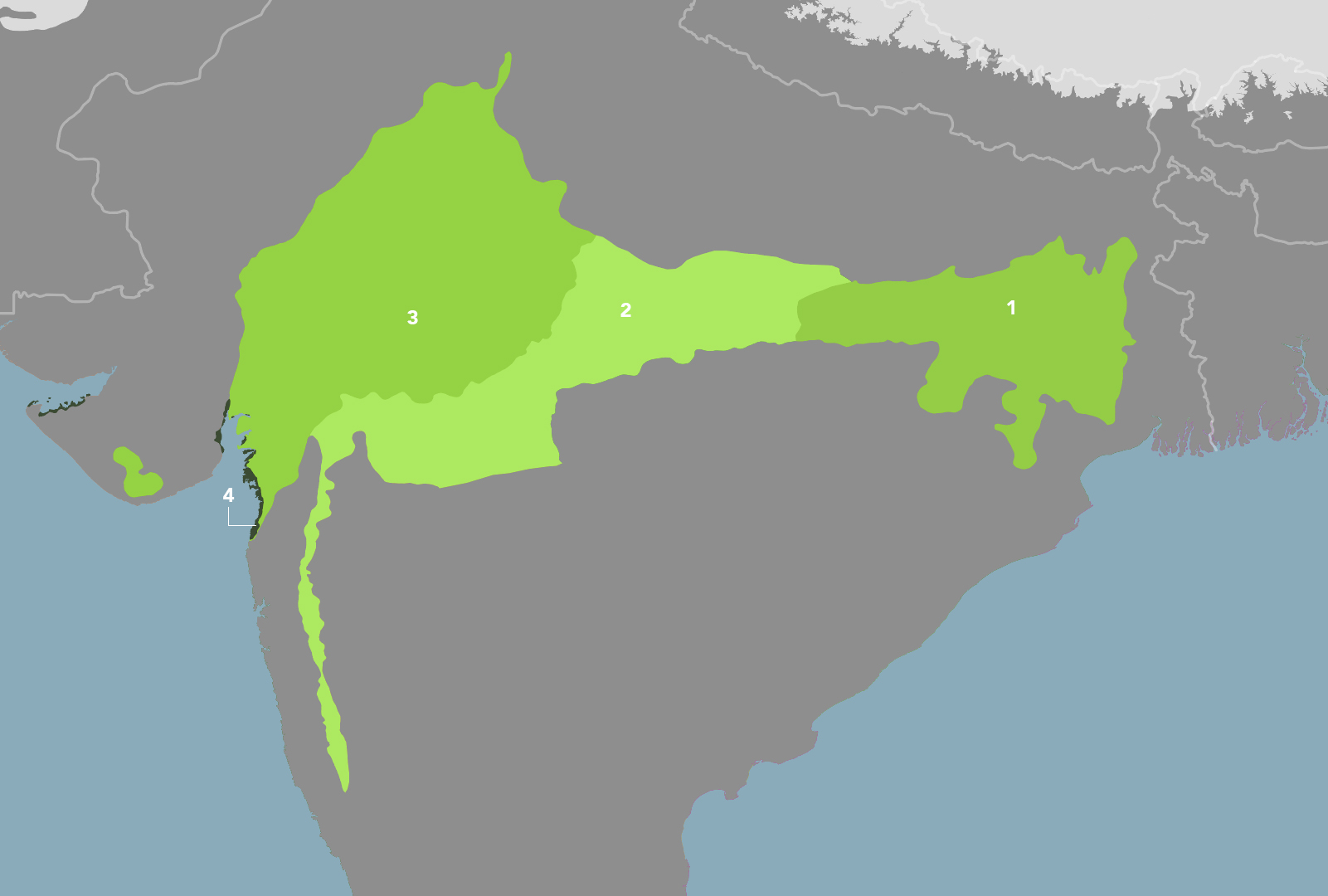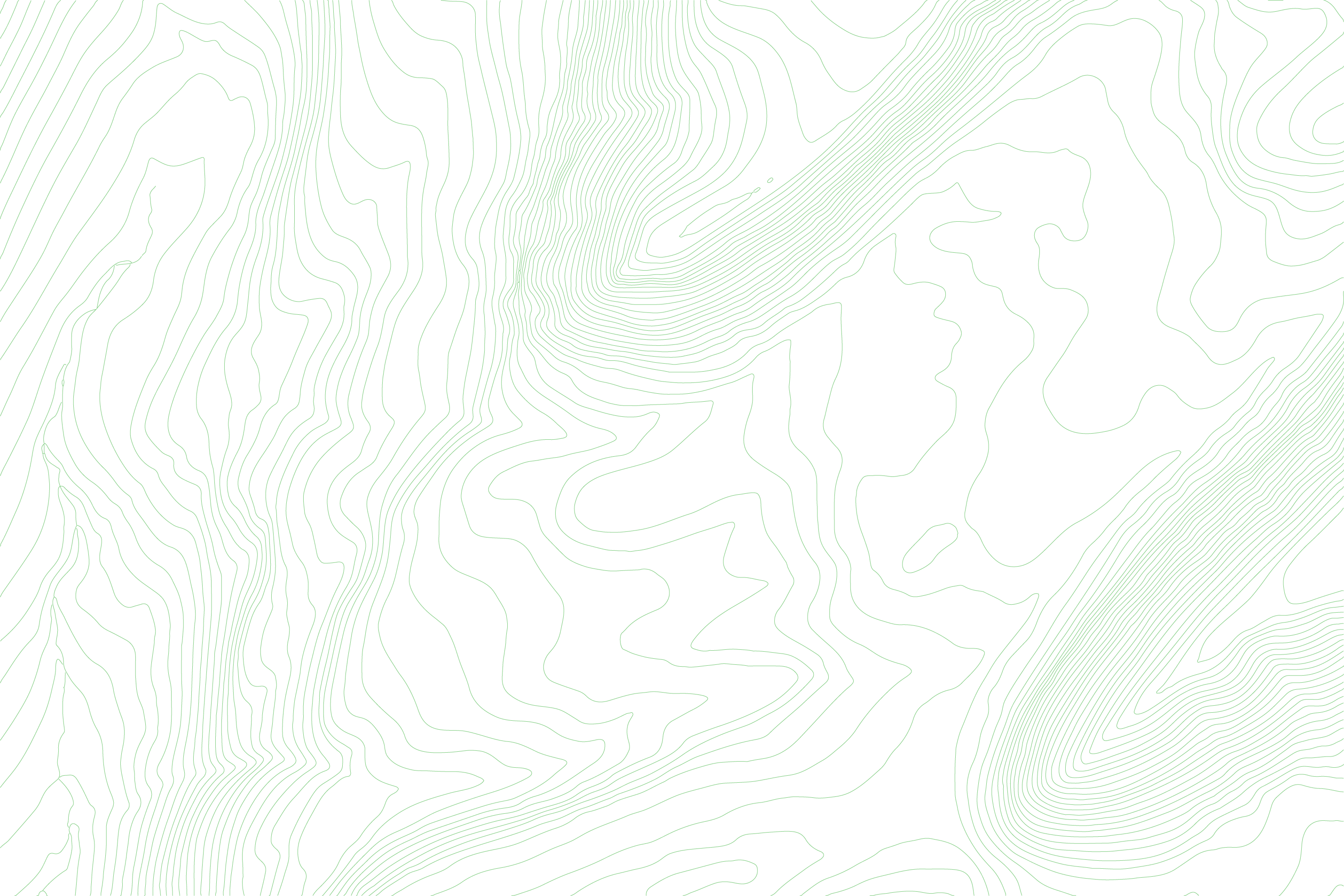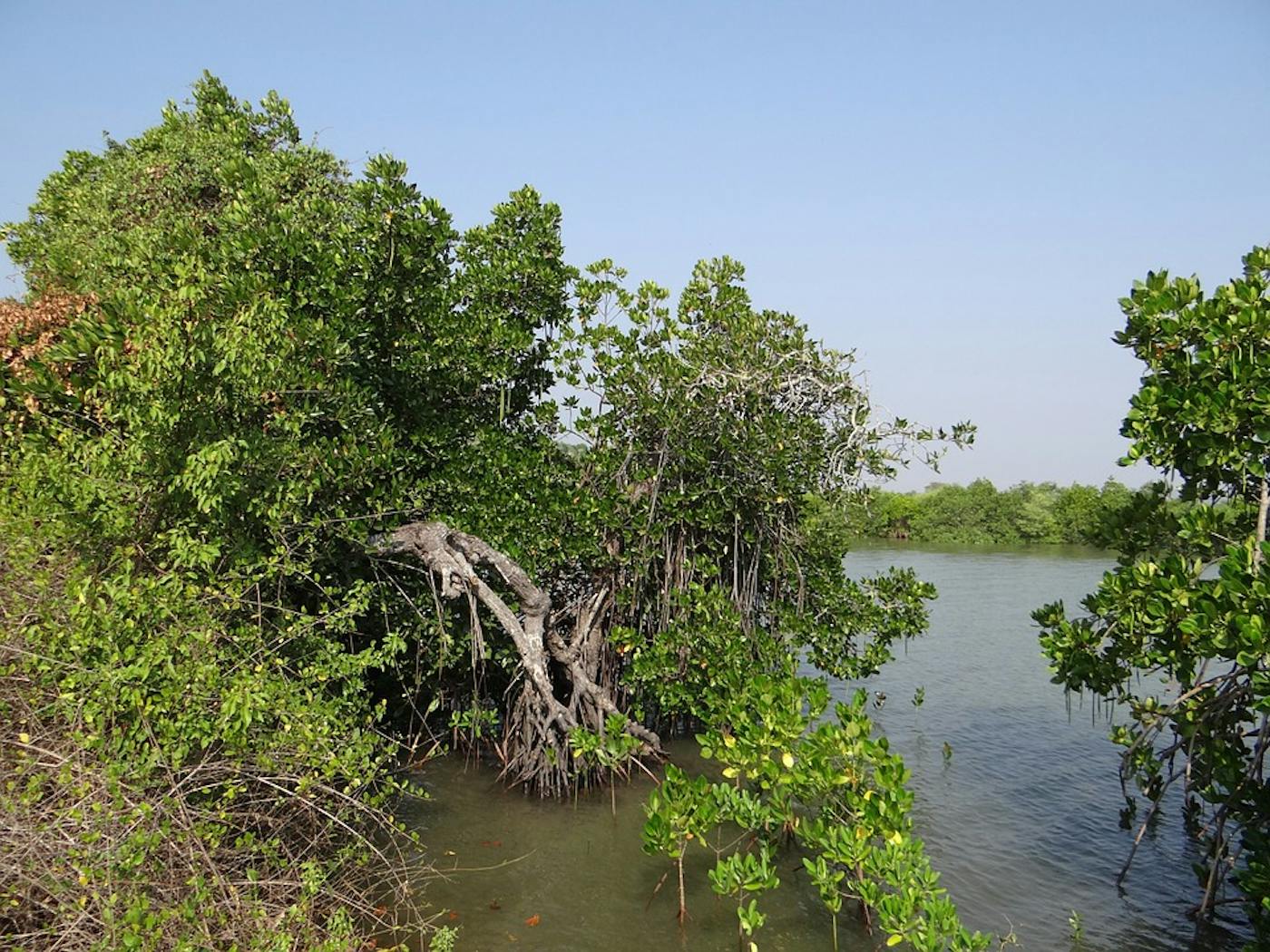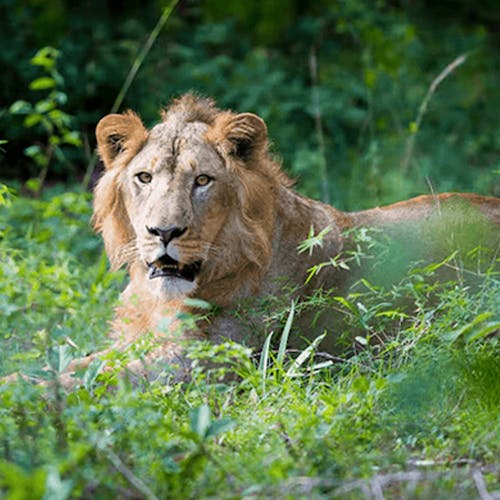Indian Dry Deciduous Forests bioregion
The bioregion’s land area is provided in units of 1,000 hectares. The conservation target is the combined Global Safety Net (GSN1) areas for the component ecoregions. The protection level indicates the percentage of the GSN goal that is currently protected on a scale of 0-10. N/A means data is not available at this time.
The Indian Dry Deciduous Forests bioregion stretches across the Indian Subcontinent subrealm in Indomalaya. It contains four ecoregions—Chhota-Nagpur Dry Deciduous Forests (292), Khathiar-Gir Dry Deciduous Forests (295), Narmada Valley Dry Deciduous Forests (296), Indus River Delta-Arabian Sea Mangroves (320). The bioregion, which includes the Narmada River and adjoining Vindhya and Chot Nagpur mountains, is defined by a very long dry season. While more than two-thirds of the region has been cleared, there are still large remaining tracts of original deciduous forests.

The Indian Dry Deciduous Forests bioregion is part of the Indian Subcontinent subrealm and is made up of four ecoregions: Chhota-Nagpur Dry Deciduous Forests [1], Narmada Valley Dry Deciduous Forests [2], Khathiar-Gir Dry Deciduous Forests [3], Indus River Delta-Arabian Sea Mangroves [4].
Learn more about each of the Indian Dry Deciduous Forests ecoregions below.

Explore the Bioregions
Want to learn more about the fascinating species, diverse ecosystems, and natural wonders of the Earth? Click the button below to launch One Earth's interactive navigator and discover your Bioregion!
LAUNCH NAVIGATOR



